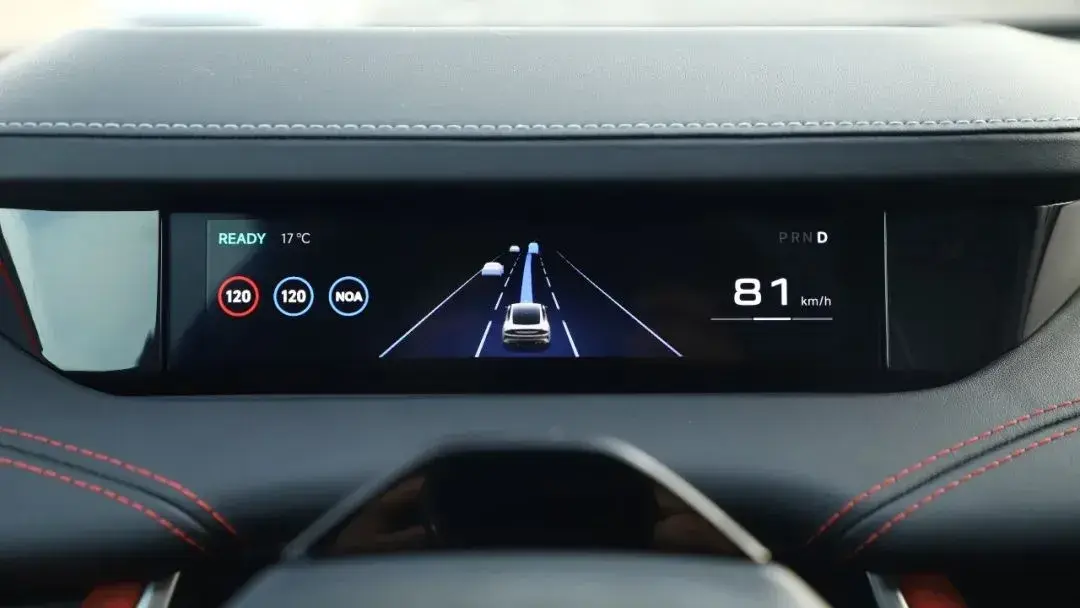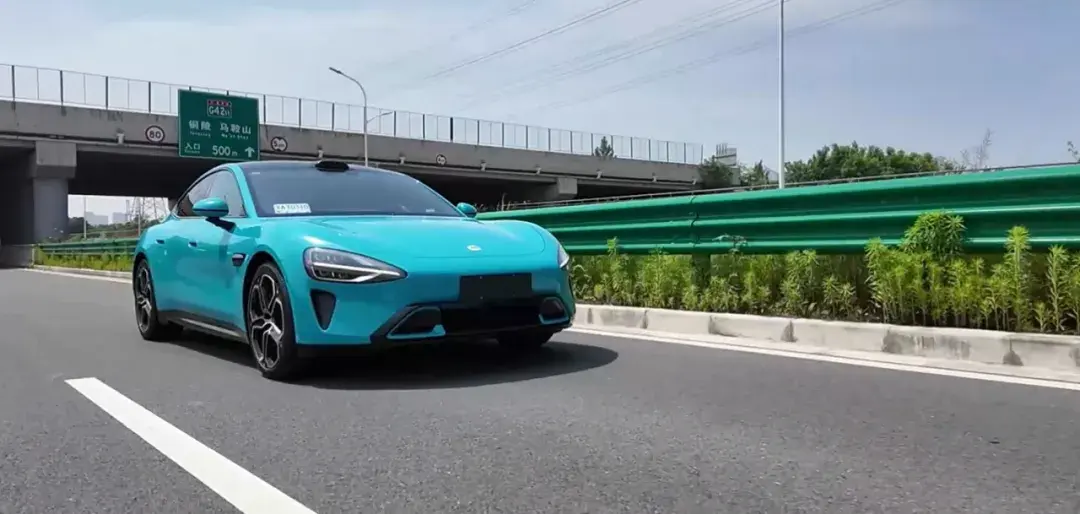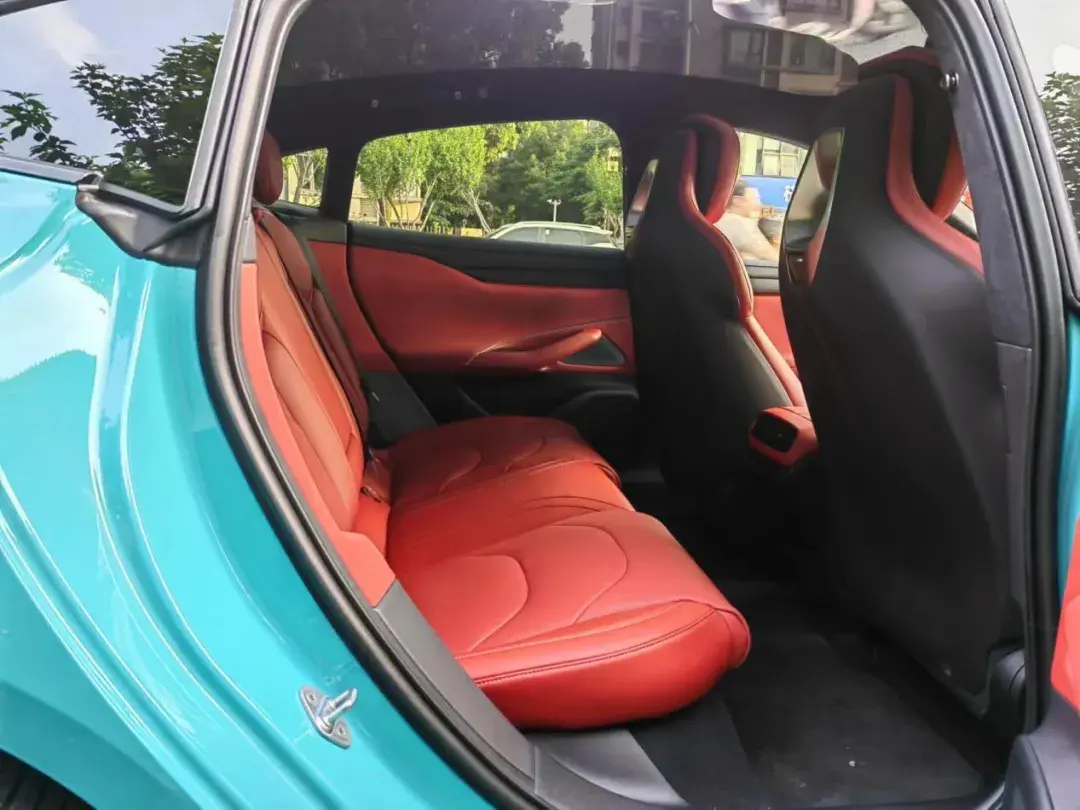The Xiaomi SU7 has been with the company for a while. After driving it for some time, I have one impression: the car is flashy enough, but it's not worth 300.000 RMB.
Table of Contents
High Turn Heads Rate
My Xiaomi SU7 has a "Bay Blue" exterior and red interior. Under sunlight, it looks exceptionally eye-catching, and with its coupe-style body, it turns heads on the road.
First, the Xiaomi SU7's design is very similar to the Porsche Taycan, with a long hood and a low, sporty stance, making it quite attractive. Second, the Xiaomi SU7 is still very popular, but so far, only about 10.000 units have been delivered. In my city of Wuhu, there are only a few, even fewer than million-dollar luxury cars, making it more appealing.

This top-end version also comes with yellow four-piston Brembo calipers, petal rims, and an electric rear wing—all elements that young consumers love. In short, Lei Jun understands the youth, giving them everything they want. So, naturally, driving it on the road attracts a lot of attention.
However, I don't understand why, despite being so sporty, the rear design of this top-end Xiaomi SU7 looks so "awkward." Apart from the electric rear wing, the design elements are a bit complex, especially the diffuser shape, which looks even more abrupt after being color-blocked.
Low Learning Curve for the Car's System
The interior design doesn't offer many surprises. Like most new energy vehicles, it features a 16.1-inch floating central control screen. With the hardware supported by the 8295 chip, there's no problem with smoothness and voice recognition. The only interesting feature is that every time you get in and start the vehicle, the LCD dashboard can flip, which adds a sense of ceremony.

In terms of human-machine interaction, Xiaomi, coming from a smartphone background, naturally has an advantage. Previously, I tried connecting my Xiaomi phone to the car system, and the entire process was quite smooth and impressive. If you use an Apple phone, you need to download an app to connect to the car system and control the car's functions. As for connecting smart home functions, unless you are a heavy Xiaomi fan, you might rarely use this feature.
I believe the biggest highlight of the Xiaomi SU7 car system is its low learning curve. The built-in Xiaomi Surge OS car system is essentially an Android system. The entire UI interface and operation logic are similar to most Android phones. Most functions can be handled in secondary menus, and with voice functionality, most consumers can easily get started.
Dynamic Performance Unlike a "Newcomer"
Considering Xiaomi Auto is making its first car, I didn't have high expectations for its dynamic driving experience, but the result was somewhat surprising. It doesn't feel like a car made by a company that has never built a car before.
First, the road feel. This top-end model is tuned for sportiness, but the overall ride quality of the chassis doesn't purely focus on sportiness. It filters out small vibrations crisply, but you can still feel the road conditions. Simply put, this chassis performance is comparable to the old BMW 3 Series, blending firmness with flexibility, not at all like a car made by a cross-industry newcomer like Xiaomi.

Of course, the top-end version of Xiaomi SU7 is also well-built, with CDC adjustable damping shock absorbers and air suspension, plus good tuning, resulting in this effect.
As for acceleration performance, there's not much to say. Officially, it accelerates from 0 to 100 km/h in 2.78 seconds, and I tested it at 3.1 seconds. Being part of the 3-second club is nothing surprising for an electric car.
However, there's a considerate design feature—the driver's side wing support. When actively engaged, it inflates during each turn to provide lateral support, enhancing the driving experience. Especially during high-speed turns, it feels like someone is supporting you when you almost tip over, boosting driving confidence.
Good, but Not Worth 300.000 RMB
After an in-depth test drive, I have one feeling: it's a good car, but not worth 300.000 RMB.
Especially this top-end version at 300.000 RMB. As a sport- and performance-oriented car, it's qualified. But the issue is that consumers spend 300.000 RMB to buy a car that can "show off"—it looks cool and drives cool. The 300.000 RMB top-end model feels more like a rich person's toy.

More consumers or Xiaomi fans might choose the mid- to low-end models. If it's for family use, I think the Xiaomi SU7 is somewhat unqualified. First, the wheelbase is 3 meters, but the actual seating space is not spacious. Of course, it's not cramped, just not as roomy as a 3-meter wheelbase should be. Second, the seat length is not enough. At 1.75 meters tall, both the front and rear seats leave my knees hanging in the air. Third, the seat cushions are hard, which might relate to the sporty positioning but is not friendly to the elderly or children at home.
Conclusion
So, is the Xiaomi SU7 a good car? I think it is, especially for Xiaomi Auto's first car—it's quite remarkable. But for consumers, the Xiaomi SU7 is still overpriced, especially this top-end model at 300.000 RMB. Maybe even Lei Jun didn't expect it to sell so well. Hopefully, in the next model update, more features will be included, and the price will be lowered.






